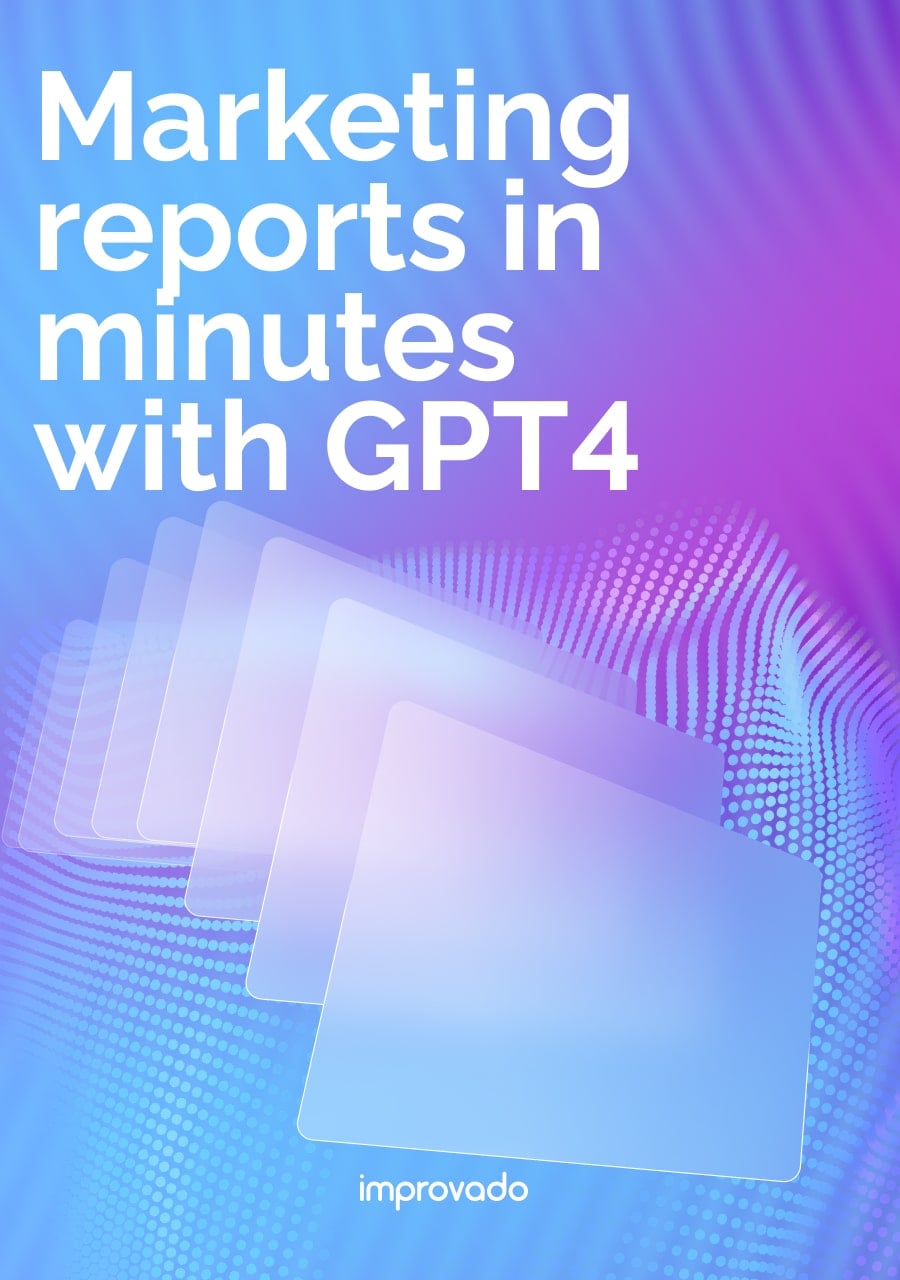The top three Google search results get 54% of all traffic. Starting from the first position, there's an intense CTR dropoff, and the lower you get in SERP, the lower the probability a prospect will find out about your offering. Paid search marketing is a resort for every brand that wants to boost its online visibility, convert with twice as high probability, and outrun competitors.
This article is a complete guide to paid search marketing, exploring what it is and how it's different from other search tactics, and how to get started or refine your paid search strategy for optimal results.
Key Takeaways
- Definition: Paid search marketing is an advertising model where businesses pay search engines to display their ads in search results.
- Mechanism: It operates on an auction-based system where advertisers bid on keywords. Ad placement is determined by the bid amount and the ad's Quality Score.
- Core components: A successful search campaign relies on in-depth keyword research, compelling ad copy, strategic bidding, optimized landing pages, and robust conversion tracking.
- Key benefits: Paid search delivers fast results, offers precise audience targeting, provides measurable performance data, and complements other digital marketing channels.
- Major platforms: The primary platforms for paid search are Google Ads, Microsoft Advertising, and Amazon Ads, each offering unique audience reach and capabilities.
What Is Paid Search Marketing?
When a user types a query into a search engine like Google or Bing, the platform runs a complex, real-time auction to decide which ads to show. The advertiser who wins the auction gets their ad displayed to that user.

This model allows businesses to target a specific audience with precision, connecting them with high-intent individuals at the exact moment they are looking for a solution.
Paid Search vs. PPC: Understanding the Relationship
The terms paid search and pay-per-click (PPC) are often used interchangeably, but there's a subtle distinction.
- PPC (Pay-Per-Click) is the broader advertising model where advertisers pay a fee for each click an ad receives. This model applies to various platforms, including search engines, social media (like Facebook Ads), and display networks.
- Paid Search is a specific type of PPC that takes place exclusively on search engines. It is the most common form of PPC advertising.
In essence, all paid search is PPC, but not all PPC is paid search. If you’re running ads on Google’s SERP, you’re doing paid search marketing and using a PPC payment model.
How Paid Search Differs from SEO and SEM
Navigating digital marketing terminology can be confusing. Here’s a clear breakdown of how paid search relates to Search Engine Optimization (SEO) and Search Engine Marketing (SEM).
- Paid Search vs. SEO: Paid search involves paying for ad placements to appear in the sponsored sections of search results. SEO focuses on optimizing your website’s content and technical structure to earn free, organic rankings in the non-paid sections of the SERP. The key difference is cost and speed: paid search costs money for immediate visibility, while SEO is a long-term strategy that builds "free" traffic over time.
- Paid Search vs. SEM: Search Engine Marketing is an umbrella term that encompasses all efforts to drive traffic from search engines, both paid and organic. Therefore, SEM includes both paid search and SEO. While some marketers use SEM to refer only to paid activities, its true definition covers the entire spectrum of search marketing.
How Does Paid Search Marketing Work?
Paid search advertising operates on a sophisticated, real-time auction system. Every time a user enters a search query, the search engine determines which ads, if any, to show and in what order. This process happens in milliseconds and is influenced by several factors.
The Auction-Based Model
When a user performs a search, the search engine’s algorithm scans for all advertisers bidding on keywords relevant to that search query. It then enters these advertisers into an ad auction to determine Ad Rank, the position an ad will appear in on the SERP.
It’s a common misconception that the highest bidder always wins the top spot. While the bid amount is crucial, it’s only one part of the equation.
Key Factors: Bid Amount, Ad Quality (Quality Score), and Ad Extensions
Ad Rank is calculated by multiplying an advertiser’s maximum bid by their Quality Score.
Ad Rank = Max CPC Bid x Quality Score
- Bid Amount (Max CPC): This is the maximum amount an advertiser is willing to pay for a single click on their ad.
- Ad Quality (Quality Score): Quality Score is Google’s rating of the quality and relevance of your keywords, ad copy, and landing page. It’s scored on a scale of 1 to 10. A higher Quality Score can lead to better ad rankings and lower costs-per-click (CPC). Its primary components are:
- Expected Click-Through Rate (CTR): The likelihood that your ad will be clicked when shown.
- Ad Relevance: How closely your ad copy matches the intent behind a user's search query.
- Landing Page Experience: How relevant, transparent, and easy-to-navigate your landing page is for users.
- Ad Extensions: These are additional pieces of information that expand your ad with more details, such as a phone number, location, or links to specific pages on your site (sitelinks). Using relevant ad extensions can improve your ad’s visibility and CTR, which in turn positively impacts your Quality Score.
Understanding Keyword Match Types (Broad, Phrase, Exact)
Keyword match types give you control over which search queries trigger your ads. Choosing the right match type is crucial for managing your budget and reaching the correct target audience.
- Broad Match: This is the default match type and provides the widest reach. Your ad may show for searches that include misspellings, synonyms, related searches, and other relevant variations. For example, bidding on
women's hatscould trigger ads for "buy ladies hats" or "winter headwear for women." - Phrase Match: Your ads will show on searches that include the meaning of your keyword. The query can contain words before or after your phrase, but the core meaning must be intact. For example,
running shoescould match searches like "best shoes for running" or "buy running shoes online." - Exact Match: This is the most restrictive match type. Your ads will only show for searches that have the same meaning or intent as the keyword. For example,
men's formal shoeswould match "formal shoes for men" but not "men's boots" or "dress shoes."
The Benefits of Paid Search Marketing
96% of advertisers run search campaigns and spend over $351.5 billion. Why?
Paid search offers distinct advantages that make it an indispensable part of a comprehensive digital marketing strategy. It empowers marketers to connect with potential customers at the most opportune moment with precision and control.
- Fast and Targeted Results: Unlike the slow build of SEO, a paid search campaign can be launched quickly and start driving traffic within hours. 65% of all high-intent searches result in an ad click. This speed allows businesses to capitalize on market trends, promotions, and seasonal demand almost instantly.
- Precise Audience Targeting: Paid search platforms offer granular targeting options. You can target users based on keywords, demographics, location, device type, online behavior, and even past interactions with your website (remarketing). This ensures your ad spend is focused on the most relevant audience.
- Direct Impact on Revenue: Paid visitors are 2 times more likely to make a purchase than organic visitors. By targeting users actively searching for products or services like yours, paid search can directly drive increased sales and revenue. The intent-driven nature of these ads often yields higher conversion rates than other forms of digital advertising, directly impacting the bottom line.
- Measurable Results and ROI: Every aspect of a paid search campaign, from impressions and clicks to conversion rates and cost-per-acquisition, is trackable. This data-driven approach allows for continuous optimization and clear ROI calculation.
- Enhanced Brand Awareness: Even if users don't click on your ad, seeing your brand name at the top of the SERP for relevant searches builds brand recognition and reinforces your position as a key player in your industry.
- Complements Other Marketing Channels: Paid search and SEO work powerfully together. Insights from paid keyword data can inform your SEO strategy, while a strong organic presence can boost the credibility of your paid ads. This synergy creates a dominant presence on the SERP.
Key Components of a Successful Paid Search Campaign
A high-performing paid search campaign is built on a foundation of strategic planning and continuous optimization. Focusing on these core components will set you up for success.
Comprehensive Keyword Research and Negative Keywords
Keyword research is the starting point of any search campaign. It involves identifying the high-intent search terms your target audience uses when looking for your products or services.
Use tools like Semrush or Google Keyword Planner to find relevant keywords, analyze their search volume, and gauge competition. Equally important is building a list of negative keywords, terms you want to exclude to prevent your ads from showing on irrelevant queries and wasting your budget.
Compelling Ad Copy
Your ad copy is your first impression. It needs to be relevant, engaging, and persuasive. A great text ad should:
- Include the primary keyword to show relevance.
- Highlight your unique value proposition (e.g., free shipping, a special discount).
- Have a clear and strong Call to Action (CTA), such as "Shop Now," "Learn More," or "Get a Free Quote."
- Align with the messaging on your landing page.
Strategic Bidding and Budget Management
Effective bidding is about finding the right balance between visibility and cost.
You can choose between manual bidding, where you set your own max CPC for each keyword, or automated bidding strategies, where the platform uses machine learning to optimize for goals like conversions or clicks.
Set a daily budget you're comfortable with and monitor performance closely to make data-driven adjustments.
Landing Page Optimization
The user journey doesn't end with a click. Your landing page must deliver on the promise of your ad. A high-quality landing page is fast-loading, mobile-friendly, and has a clear, singular focus that guides the user toward a conversion goal. Ensure the headline, content, and CTA on the page are consistent with the ad copy that brought the user there.
Implementing Conversion Tracking and Measurement
You can't optimize what you don't measure. Setting up conversion tracking is non-negotiable. This allows you to see which keywords, ads, and campaigns are driving valuable actions like purchases, form submissions, or phone calls.
Native ad platforms provide built-in tracking, but enterprise teams often face gaps: inconsistent attribution logic across platforms, fragmented reporting, and hours wasted reconciling numbers between Google Ads, Microsoft Ads, LinkedIn, and analytics systems. These discrepancies make it difficult to confidently understand true ROAS and channel contribution.
Improvado solves this by centralizing conversion data across the entire paid ecosystem. It automatically ingests and normalizes metrics from 500+ ad, analytics, and CRM platforms, unifying them into a single, trustworthy view. No manual exports. No spreadsheet stitching. No conflicting definitions of conversion.
With Improvado, marketing teams unlock:
- Consistent attribution logic across all paid channels
- Automated data harmonization for ad + CRM + revenue systems
- Real-time visibility into CPA, ROAS, pipeline, and revenue contribution
- Reliable cross-platform conversion tracking without manual QA
Types of Paid Search Campaigns
Paid search advertising isn't limited to the standard text ads you see on the SERP. Platforms like Google Ads offer a variety of campaign types designed to meet different marketing objectives.
Search Ads

These are the most common types of paid search ads. They are text-based and appear on the SERP when a user’s search query matches the advertiser's keywords. They are ideal for capturing high-intent users actively looking for specific products or services.
Display Ads
Display ads are visual ads (images, videos, or rich media) that appear across a network of millions of websites, apps, and videos like the Google Display Network. While not technically "search" ads, they are part of the same ecosystem and are excellent for building brand awareness and remarketing.
Shopping Campaigns (Product Listing Ads)
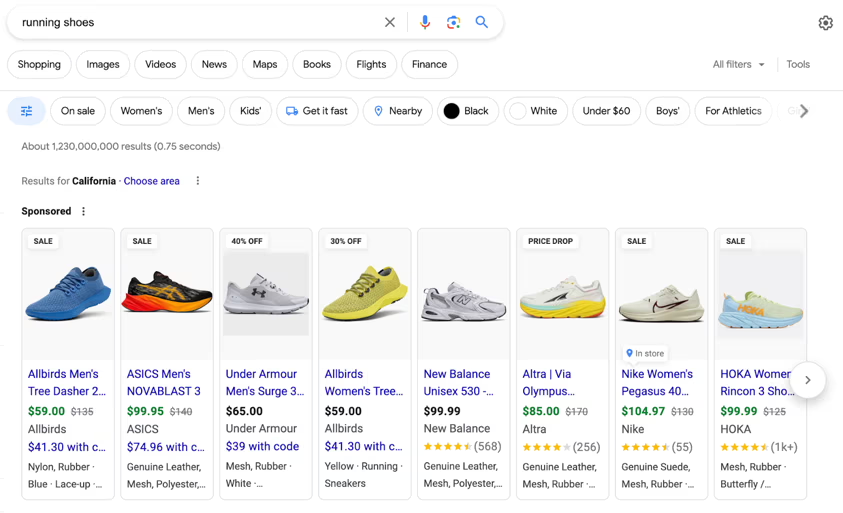
For e-commerce businesses, Shopping campaigns are essential. These ads, also known as Product Listing Ads (PLAs), showcase product images, titles, prices, and store names directly in the search results. They are highly visual and tend to have higher click-through rates than text ads for retail queries.
Video Ads
Video ads, primarily run through platforms like YouTube, allow you to reach and engage viewers with video content. You can run various formats, such as skippable in-stream ads or shorter bumper ads. They are highly effective for storytelling and driving brand engagement.
Remarketing Campaigns (RLSA)
Remarketing Lists for Search Ads (RLSA) allow you to customize your search campaigns for people who have previously visited your website. You can tailor your bids and ad copy for these high-value users when they are searching on Google, helping you re-engage potential customers who have already shown interest in your brand.
Major Paid Search Platforms
While Google is the dominant player, a comprehensive paid search strategy should consider other platforms to maximize reach and tap into unique audiences.
Google Ads
As the world's largest search engine, Google Ads is the go-to platform for most advertisers. Its massive reach, sophisticated targeting options, and diverse ad formats make it a powerful tool for nearly any business. It provides access to the Google Search Network, Display Network, YouTube, and more.
Microsoft Advertising (Bing Ads)
Microsoft Advertising (formerly Bing Ads) allows you to place ads on the Microsoft Search Network, which includes Bing, Yahoo, and AOL. While its search volume is smaller than Google's, it often features an older, more affluent demographic and lower average CPCs due to less competition. It's a valuable platform for diversifying your paid search efforts.
Amazon Ads
For e-commerce and retail brands, Amazon Ads is a critical platform. It allows sellers to advertise their products directly on Amazon's search results pages, putting them in front of users with extremely high purchase intent. Amazon's advertising suite includes Sponsored Products, Sponsored Brands, and Sponsored Display ads.
Paid Search Marketing Best Practices
To achieve a strong return on your advertising spend, it’s crucial to follow established best practices and continuously fine-tune your campaigns.
1. A/B Test Ad Creatives and Landing Pages
Never assume you know what will perform best. Continuously test different versions of your ad copy, headlines, and calls to action to identify the messaging that resonates most with your target audience. Similarly, A/B test elements on your landing page, such as headlines, button colors, and form fields, to improve conversion rates.
2. Refine Audience Targeting
Don't set your targeting and forget it. Regularly review your campaign performance across different demographics, locations, and devices. Refine your targeting to focus your budget on the segments that deliver the best results. Use remarketing lists to re-engage past visitors and customer match to target existing customers.
3. Focus on Conversion Goals
Clicks and impressions are vanity metrics if they don't lead to business results. Align your campaign goals with tangible business objectives, such as leads, sales, or sign-ups. Use bidding strategies that optimize for conversions, not just clicks, to ensure your ad spend is driving real value.
4. Monitor and Record Results
Paid search is a data-driven discipline. Regularly monitor key metrics like CTR, CPC, conversion rate, and cost-per-acquisition (CPA). Use a consistent system to record results and track changes over time. This historical data is invaluable for identifying trends, understanding performance drivers, and making informed optimization decisions.
5. Research Competitors
Keep a close eye on your competitors. Use tools like Semrush to see what keywords they are bidding on, what their ad copy looks like, and what their estimated ad spend is. This competitive intelligence can reveal gaps in your own strategy and uncover new opportunities for growth.
The Role of Analytics in Paid Search Optimization
Analytics is the engine that powers successful paid search optimization. The data generated by your campaigns provides the insights needed to make strategic decisions, allocate budget effectively, and maximize ROI. By analyzing performance metrics, you can understand what's working, what isn't, and why.
Effective analysis goes beyond the surface-level metrics available in platform dashboards. It involves connecting paid search data with other marketing and business data to understand the full customer journey. This means tracking post-conversion behavior, calculating lifetime value, and attributing revenue accurately across multiple touchpoints.
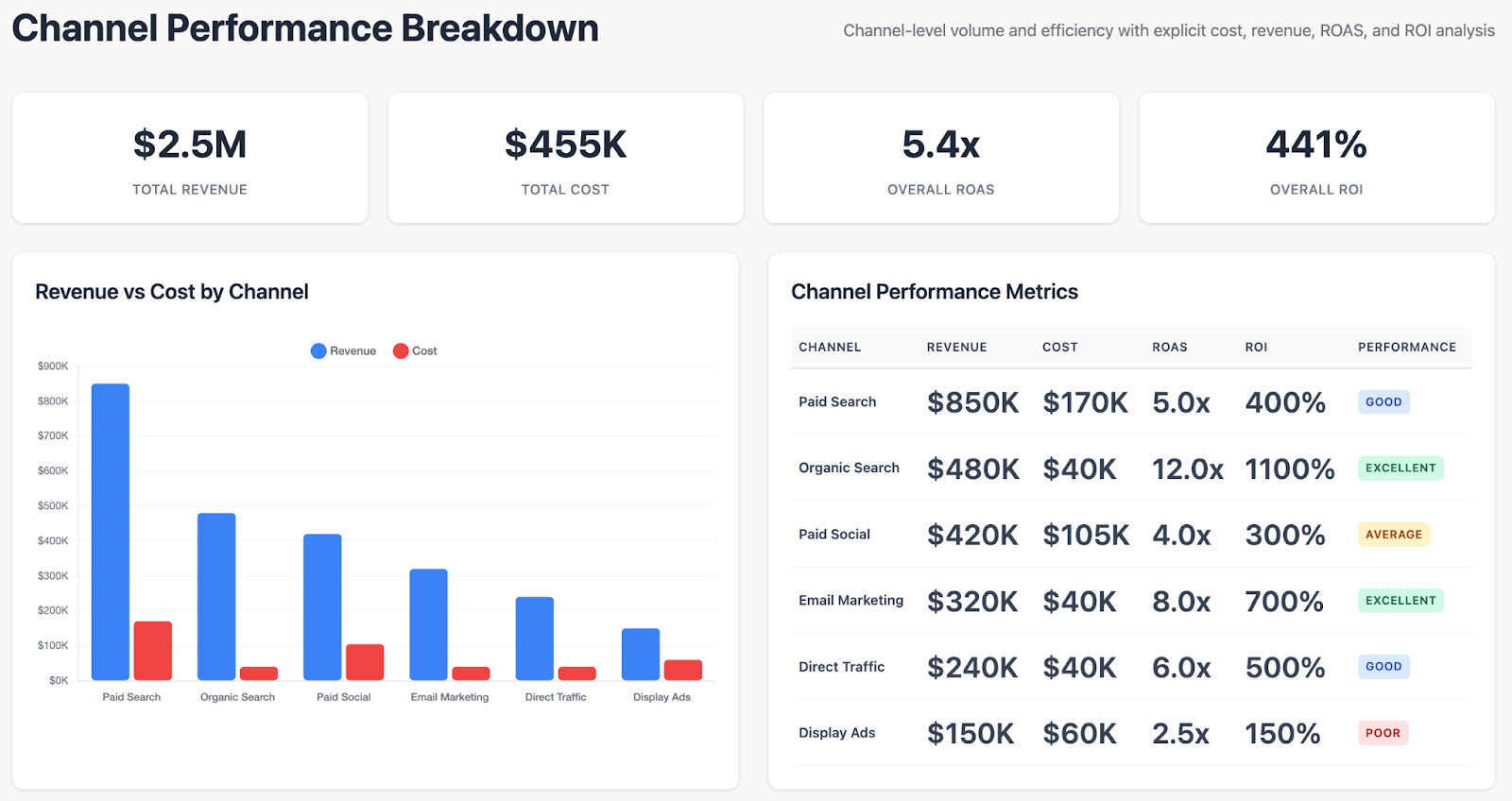
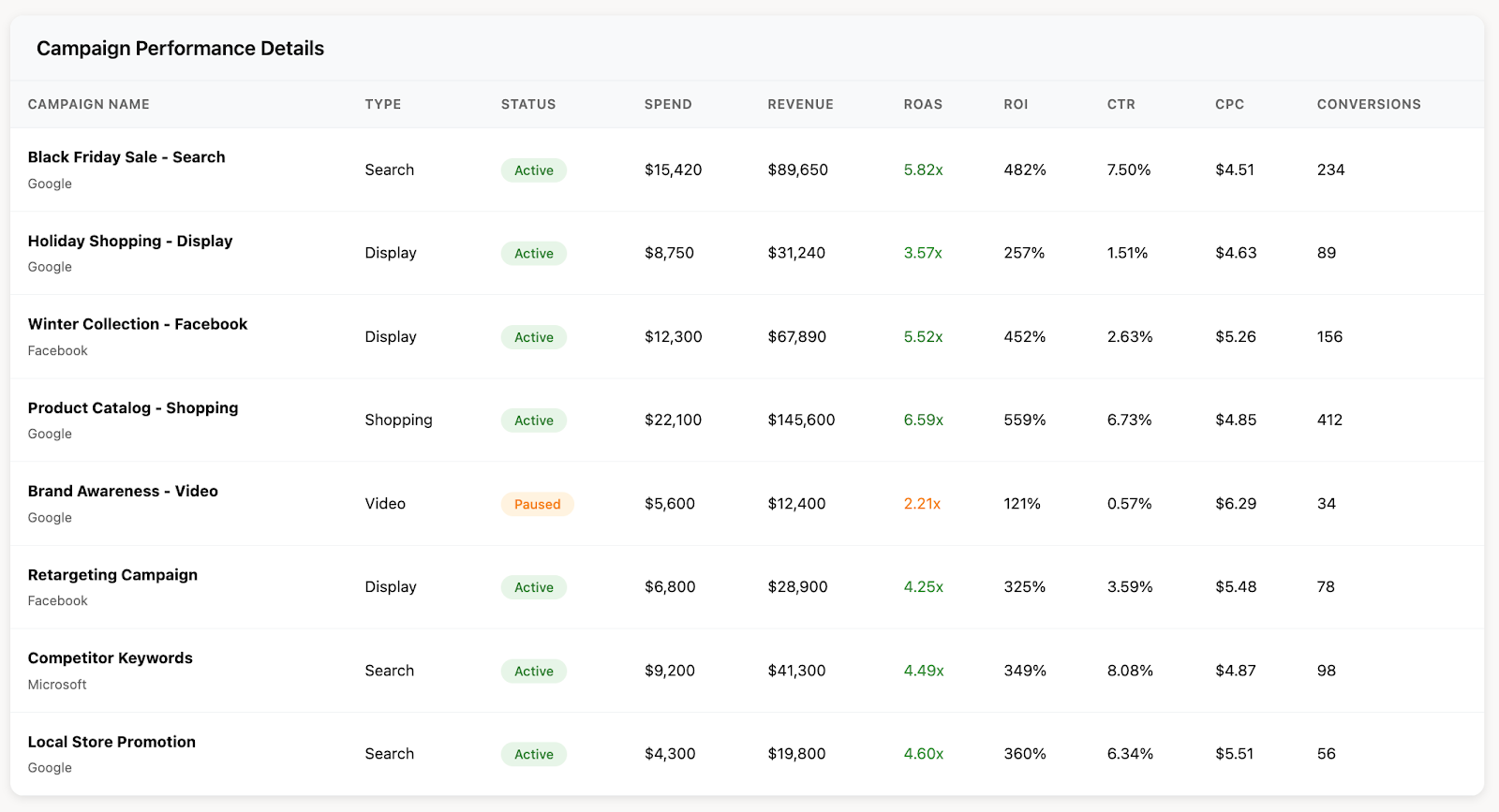
To truly optimize at scale, marketers need a unified view of performance across all paid channels. Improvado centralizes this data, allowing marketing ops and analytics leaders to move beyond basic platform dashboards and analyze holistic ROI, attribute conversions accurately, and send analysis-ready data directly to BI tools like Tableau or Power BI.
In addition to robust data pipeline, Improvado equips teams with:
- Real-time metric pacing and anomaly detection to catch performance shifts early,
- AI Agent for instant dashboards, natural-language insights, and ad-hoc analysis without SQL,
- Unified attribution and revenue visibility across campaigns, CRM, and finance systems,
- Data governance and validation to ensure accurate, consistent measurement across channels,
- Seamless delivery to BigQuery, Snowflake, Databricks, Tableau, Looker, and Power BI.
Book a demo with Improvado to confidently scale spend, streamline reporting, and optimize campaigns using accurate and always-up-to-date performance intelligence.
Conclusion
Paid search marketing remains one of the most effective and scalable channels for driving targeted traffic and achieving measurable business goals. By understanding its core mechanics marketers can unlock a powerful tool for growth.
Success in paid search advertising requires a strategic, data-driven approach that combines careful planning with continuous testing and refinement. By implementing the best practices outlined in this guide, you can build high-performing campaigns that not only reach potential customers but also convert them, delivering a strong and demonstrable return on your investment.
.png)


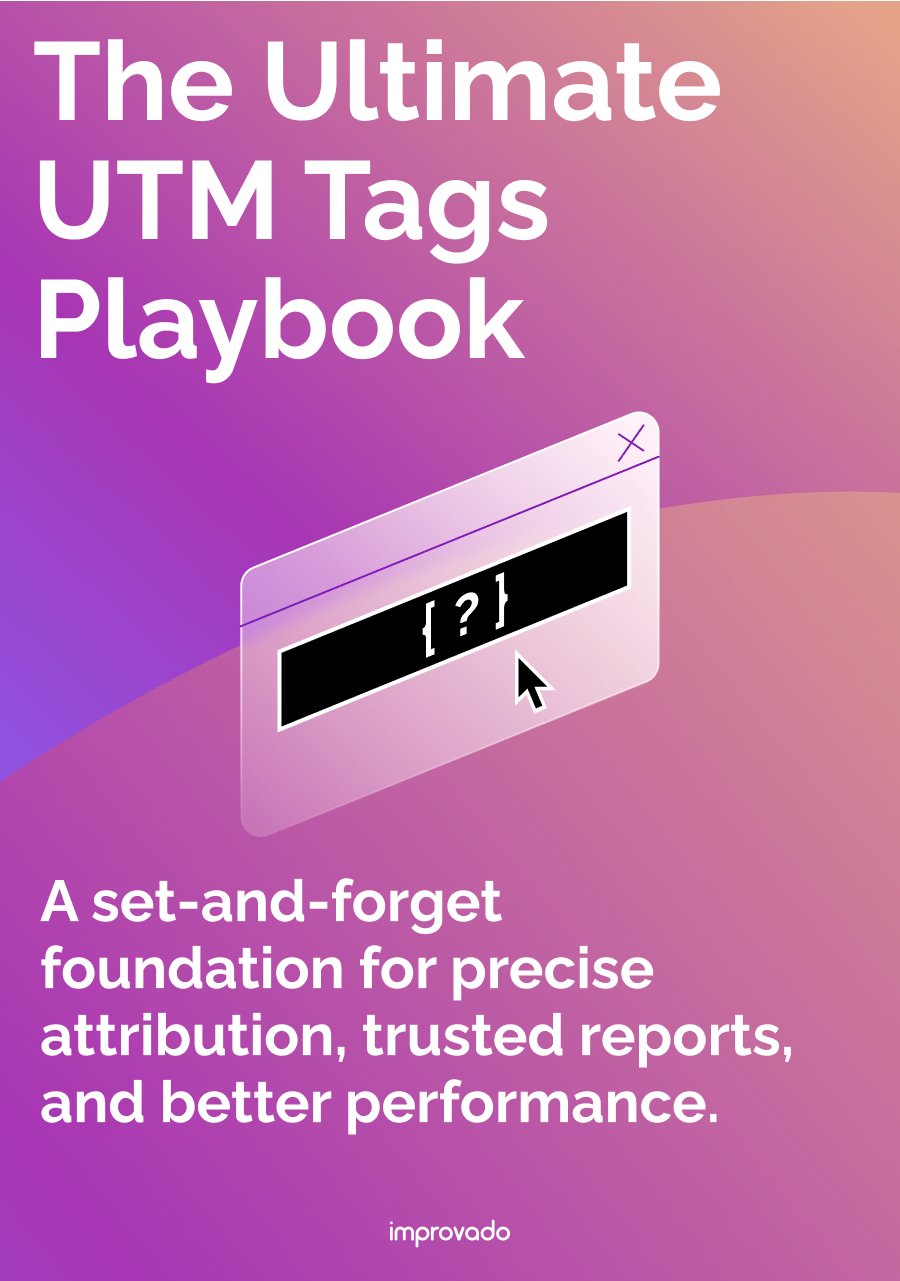
.png)
